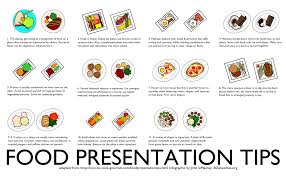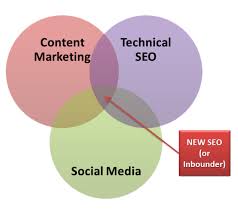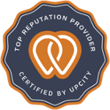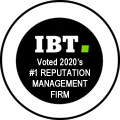Six-Million Ways to Try…
admin, May 11, 2012
I wrote a piece a couple days ago urging business owners to stop reading about online marketing, suggesting a call to elucidate a more personalized understanding. I was happy to see it get a little attention from business owners and industry members.
Today, I was reading some more posts and doing more thinking. I didn't really hit the nail on the head like I wanted the other day; in retrospect, my presentation was somewhat vague like the posts I warned against. I presented a notion, which is a good start; yet, readers better wrap heads around actual examples.
Chris Countey gave concrete examples in his #SearchChurch presentation yesterday on relevant authorship. As stated, people appreciate real-life examples; but, don't take my word for it:
This is the most in depth preso I have ever seen on authorship with real examples. Killing it @chriscountey #searchchurch
Today, I thought it would be a better idea to evolve my suggestion further and involve concrete examples. Ken Wisnefski's Pinterest interview on Street.com mentions a visually-stimulating experience and commonality regarding Pinterest and Facebook. I started thinking of 'visual' intrigue.
Socializing Steaks
What kinds of consumers are intrigued by visual intrigue? What verticals are more likely to serve customers 'moved' by visual intrigue? As Joanna Lord suggested last night, brands must define "human triggers," then implement them into offered content. Many products (clothes, food, decorative implements…) as well as some services (home improvement, landscaping, hotels, etc…) warrant visual stimulation and intrigue.
With the recent industry event, many people were stoked to try some famous Philly cheese steaks. I thought it would be apropos to use the famous, Jim's Steaks as an example:
I don't know if Jim's does any marketing or if the brand is interested in the endeavor; yet, if I was attending to the brand, one thing I may suggest is social media presence. Let's use Pinterest as an example. Pinterest is a highly visual platform. All of those who have worked in the food industry know that presentation is important.

Immediately, I can't find any pictures of food on Jim's Web site. I did a quick look for a Pinterest account; I didn't locate one and observe no indication of online social presence from the brand's homepage.
Would it be enticing for consumers to 'see' some of Jim's tasty products on Pinterest via high-quality pictures? What about starting some lunch-time-Philly-centric memes on Twitter? How about a video of how the steaks are prepared on Facebook? How about some Instagram pics of famous people and acts who pass through the doors?
Jim's has a great reputation and enjoys foot traffic, especially off of South Street; yet, could the brand be a bit more proactive? Is it a mistake to be lax, relying on the volition of consumers? Is it better to prompt them using social media product placement? It just could make a difference.
Pinpointing Pizza
I currently live in a small town of Glenwood Springs, Colorado. The town enjoys a lot of outsider traffic due to its proximity to Aspen in the winter; and, many people pass through Glenwood in the summer as well on vacation. I live with an owner of a pizza shop. Like Jim's above, his business is known by locals and enjoys good word-of-mouth; yet, my suggestion to the owner of Peppino's focused on optimizing his business for outside consumers, those who DON'T immediately know his business is there.
Secondly, there are numbers of restaurants in Glenwood, yet many are not in-between eateries like Peppino's; you could either sit in and relax or get quick takeout. I think such a dynamic puts Peppino's at an advantage regarding out-of-towners.

There's a number of ways you could help Peppino's, but as suggested, focusing on optimizing for geographic localization is a good idea given the brand's present situation and business model. I would definitely revisit SEOmoz's Venice Update post and look into what I could do regarding locally optimizing their two locations within the Roaring Fork Valley.
As-Built for Social Marketing?
I have a Twitter friend, Brian Curran, who runs a CAD consultant businesses, concentrating on as-built drawings, building surveys, etc. It's a very unique niche. Brian's site was recently affected by the Penguin update.
At first, I was thinking Brian could 'make a name' for himself through guest blogging, online socializing, doing PR, and the like; yet, I was thinking of him in terms of me, a writer in the online marketing vertical. It's different for him; the dynamic of his vertical is different.
I do absolutely no technical SEO on my personal blog; I don't feel like I need to at the moment; my blog is not monetized; its purpose is for people to get to know me and my writing. It's important I socialize with peers, guest blog, write on my blog, do some PR, etc. Peer relations is important to me.
 This is new online paradigm, yet some verticals still rely heavily on technical due to specific dynamics.
This is new online paradigm, yet some verticals still rely heavily on technical due to specific dynamics.
Those things could help Brian; yet, he tells me in his industry, the 'norm' involves getting leads from the SERs. His clients are not entirely 'picky.' They're searching for his services much like I would search for a dentist; I wouldn't get too into judging apples to apples regarding dentistry. Brian tells me the decision is based more on convenience; consumers conduct a search, put in a request, and get a consultant like him on the phone.
Ensuring his site is 'optimized' for key queries is of paramount importance due to the sales dynamic. However, in the wake of the recent update, which deservedly and undeservedly penalized sites with reflexive urls/incoming links, Brian needs to focus on 'tempering' his reliance on technical SEO, yet can't afford to disband it like myself. It's too important to his specific operation.
He also tells me the clients are not recurring. They are one-off and usually don't give him recommendations. Perhaps he can't do anything about making consumers recurring; but, perhaps he could do something about referrals. Maybe offering some sort of 'rebate' on past clients who refer his services? Just a thought but I have more.
Conclusion
As you can read, I wanted this post to be a bit more on the concrete side. I understand specific, case-study-like examples give business readers the ability to better 'see' the powers of online marketing in progress. Otherwise, you're just spinning your mind's wheels and pondering, "Will that work for me?"





